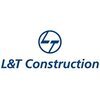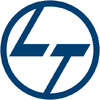Filter interviews by
J. Kumar Infraprojects Safety Officer Interview Questions, Process, and Tips for Experienced
J. Kumar Infraprojects Safety Officer Interview Experiences for Experienced
2 interviews found
I appeared for an interview in Jan 2025.
(2 Questions)
- Q1. How much type of lifting crane
- Ans.
There are several types of lifting cranes used in various industries.
Mobile cranes
Tower cranes
Overhead cranes
Telescopic cranes
Loader cranes
- Q2. How much type of lifting
- Ans.
There are two main types of lifting: manual lifting and mechanical lifting.
Manual lifting involves lifting objects by hand, without the use of equipment.
Mechanical lifting involves using equipment such as cranes, forklifts, or hoists to lift heavy objects.
Proper training and techniques are essential to prevent injuries during lifting.
Examples of manual lifting include lifting boxes, bags, or furniture.
Examples of mecha...
I applied via Approached by Company and was interviewed in Feb 2022. There was 1 interview round.
(3 Questions)
- Q1. What is fire, classes of fire?
- Ans.
Fire is a chemical reaction that releases heat, light, and gases. There are 6 classes of fire based on the fuel involved.
Fire is a rapid oxidation process that produces flames, heat, and smoke.
The 6 classes of fire are Class A, B, C, D, E, and F.
Class A fires involve ordinary combustible materials like wood, paper, and cloth.
Class B fires involve flammable liquids or gases like gasoline, oil, and propane.
Class C fires ...
- Q2. Classification Of Fire?
- Ans.
Classification of fire refers to categorizing fires based on the type of fuel involved.
Fires are classified into different classes based on the type of fuel they involve.
There are six classes of fire: Class A, Class B, Class C, Class D, Class K, and Class F.
Class A fires involve ordinary combustible materials like wood, paper, and cloth.
Class B fires involve flammable liquids like gasoline, oil, and grease.
Class C fire...
- Q3. Causes Of Electrocution?
- Ans.
Electrocution can be caused by various factors such as direct contact with live electrical wires, faulty electrical equipment, and inadequate grounding.
Direct contact with live electrical wires
Faulty electrical equipment
Inadequate grounding
Improper use of electrical appliances
Overloaded circuits
Exposed electrical parts
Damaged insulation on wires
Improper installation of electrical systems
Lightning strikes
Interview Preparation Tips
- Hot Work
- Electrical Works
Top trending discussions






Interview questions from similar companies

I applied via Company Website and was interviewed before Apr 2021. There were 7 interview rounds.
Accident, incident
Any hazardous
Any near miss
HIRA
Interview Preparation Tips
- Diploma Fire and Safety

I applied via Recruitment Consultant and was interviewed in Mar 2021. There were 2 interview rounds.
Interview Preparation Tips

I applied via Naukri.com and was interviewed in Dec 2017. There were 4 interview rounds.
Interview Questionnaire
3 Questions
- Q1. Tell me about your self
- Ans.
Experienced safety officer with a background in industrial safety protocols and emergency response procedures.
Over 5 years of experience in implementing safety measures in industrial settings
Proficient in conducting safety audits and inspections to ensure compliance with regulations
Skilled in developing and implementing safety training programs for employees
Strong knowledge of emergency response protocols and procedure...
- Q2. Duties of safety Officer
- Ans.
Safety Officers are responsible for ensuring the safety of employees in the workplace by implementing safety protocols and procedures.
Develop and implement safety policies and procedures
Conduct regular safety inspections and audits
Investigate accidents and incidents to determine root causes
Provide safety training to employees
Ensure compliance with safety regulations and standards
Maintain safety records and reports
- Q3. Working improvement
Interview Preparation Tips
Experience: Written test
General Tips: Expended
Skills: Self-Awareness
Duration: <1 week

Safety Officer Interview Questions & Answers
Larsen & Toubro Limitedposted on 12 Jun 2020
Interview Questionnaire
2 Questions
- Q1. About work experience. i.e HIRA,SOP,
- Q2. Basis knowledge.

Interview Questionnaire
3 Questions
- Q1. What's Safety policy ?
- Ans.
Safety policy is a set of guidelines and procedures designed to ensure the safety of employees and prevent accidents in the workplace.
Safety policy outlines the responsibilities of employees and management in maintaining a safe work environment.
It includes procedures for identifying and reporting hazards, conducting safety training, and responding to emergencies.
Examples of safety policies include wearing personal prot...
- Q2. What's Height work ?
- Q3. What's Emergency plan ?
- Ans.
Emergency plan is a set of procedures and guidelines to be followed in case of an emergency or disaster.
It outlines the roles and responsibilities of individuals and teams during an emergency
It includes evacuation procedures, communication protocols, and emergency contacts
It should be regularly reviewed and updated to ensure its effectiveness
Examples include fire evacuation plans, severe weather plans, and active shoot

Interview Questionnaire
9 Questions
- Q1. What's responsible safety officer on site .
- Ans.
A responsible safety officer on site ensures the implementation and enforcement of safety protocols to prevent accidents and promote a safe working environment.
Implementing and enforcing safety policies and procedures
Conducting regular safety inspections and audits
Identifying and assessing potential hazards
Providing safety training and education to employees
Investigating accidents and incidents
Maintaining safety record...
- Q2. Before starting work on site your roll .
- Ans. My site roll are check every think check or before starting job 5 minutes tool box talk.
- Q3. What is risk assessment
- Ans.
Risk assessment is the process of identifying potential hazards and evaluating the likelihood and severity of harm that could result.
Identify potential hazards
Evaluate likelihood and severity of harm
Determine risk level
Implement measures to control or mitigate risks
Regularly review and update risk assessments
Examples: workplace risk assessments, environmental risk assessments
- Q4. What is lockout and togout
- Ans.
Lockout and tagout is a safety procedure used in industry and research settings to ensure that dangerous machines are properly shut off and not able to be started up again prior to the completion of maintenance or repair work.
Lockout involves physically disconnecting the power source of a machine or equipment, while tagout involves placing a warning tag on the power source to indicate that it should not be turned on.
Th...
- Q5. What is hazard analysis
- Ans.
Hazard analysis is the process of identifying potential hazards and evaluating their risks to prevent accidents or injuries.
Identify potential hazards in the workplace or environment
Evaluate the risks associated with each hazard
Develop strategies to prevent accidents or injuries
Implement controls to mitigate the risks
Regularly review and update hazard analysis
Examples: Job Hazard Analysis (JHA), Hazard and Operability ...
- Q6. Confined space hazard
- Ans.
Confined space hazard refers to the potential dangers associated with working in enclosed or partially enclosed spaces.
Confined spaces can be found in a variety of workplaces, including tanks, vessels, silos, sewers, and tunnels.
Hazards in confined spaces can include lack of oxygen, toxic gases, flammable substances, and physical hazards such as entrapment or engulfment.
Proper training, equipment, and procedures are ne...
- Q7. What is hot work
- Ans.
Hot work refers to any activity that involves open flames, sparks, or heat sources that could potentially ignite flammable materials.
Examples of hot work include welding, cutting, brazing, soldering, and grinding.
Hot work must be performed in a designated area that has been cleared of flammable materials.
Before hot work begins, a permit must be obtained and a fire watch must be established.
Proper personal protective eq...
- Q8. What is cold work
- Ans.
Cold work refers to any metalworking process that is performed at room temperature or below.
Examples of cold work include bending, punching, and shearing metal.
Cold work can cause strain hardening, which can make the metal more difficult to work with in the future.
Cold work can also cause surface defects, such as cracks or scratches.
Cold work is often used to shape metal into specific forms or sizes.
Cold work is typica...
- Q9. How will you use grinder coupler
- Ans.
Grinder coupler is used to connect the grinder to the power source.
Ensure the coupler is compatible with the grinder and power source
Inspect the coupler for any damage before use
Securely attach the coupler to the grinder and power source
Follow proper lockout/tagout procedures when connecting or disconnecting the coupler
Examples: Using a coupler to connect a grinder to a generator on a construction site
Using a coupler t...

I applied via Recruitment Consulltant and was interviewed in Apr 2024. There were 7 interview rounds.
Our aim zero accident
Increase culture of safety
Made work permit box
Devloped safety culture
(2 Questions)
- Q1. How to develop the safety culture on site?
- Ans.
Developing a safety culture on site involves leadership commitment, employee involvement, training, communication, and continuous improvement.
Leadership commitment to safety is crucial in setting the tone for the entire organization.
Encourage employee involvement in safety programs and decision-making processes.
Provide regular safety training to ensure employees are aware of potential hazards and how to mitigate them.
E...
- Q2. How to ensure the safety at movlitauon time of project
- Ans.
Ensure safety at project mobilization by conducting thorough risk assessments, providing proper training, enforcing safety protocols, and maintaining clear communication.
Conduct comprehensive risk assessments before mobilization to identify potential hazards
Provide necessary safety training to all personnel involved in the project
Enforce strict adherence to safety protocols and regulations on-site
Maintain clear communi...
(2 Questions)
- Q1. How to ensure safety in confined space
- Ans.
To ensure safety in confined spaces, proper training, equipment, communication, and monitoring are essential.
Provide thorough training on confined space entry procedures and hazards
Ensure workers have appropriate personal protective equipment (PPE)
Implement a permit system for entry into confined spaces
Maintain constant communication with workers inside the confined space
Regularly monitor air quality and other hazards ...
- Q2. How many AC & DC voltage current allowed in confined space
- Ans.
The maximum AC voltage allowed in a confined space is typically 50 volts, while the maximum DC voltage allowed is usually 120 volts.
Maximum AC voltage allowed in confined space is usually 50 volts
Maximum DC voltage allowed in confined space is typically 120 volts
Moderator of safety culture
Interview Preparation Tips

(2 Questions)
- Q1. What is safe work producer
- Ans.
Safe work producer is a term used to describe an individual or organization that prioritizes safety in the workplace.
Safe work producers prioritize safety measures to prevent accidents and injuries
They implement safety protocols and procedures to ensure a safe work environment
Examples include companies that provide safety training for employees, conduct regular safety inspections, and enforce safety regulations
- Q2. What is safety
- Ans.
Safety is the state of being free from harm or danger.
Safety involves identifying and mitigating risks to prevent accidents or injuries
It includes following safety protocols and guidelines in the workplace or at home
Examples of safety measures include wearing protective gear, using safety equipment, and practicing safe behaviors
Interview Preparation Tips
J. Kumar Infraprojects Interview FAQs
Tell us how to improve this page.
J. Kumar Infraprojects Interviews By Designations
- J. Kumar Infraprojects Civil Engineer Interview Questions
- J. Kumar Infraprojects Civil Foreman Interview Questions
- J. Kumar Infraprojects Senior Engineer Interview Questions
- J. Kumar Infraprojects Safety Officer Interview Questions
- J. Kumar Infraprojects Safety Supervisor Interview Questions
- J. Kumar Infraprojects Asst Store Interview Questions
- J. Kumar Infraprojects Quality Engineer Interview Questions
- J. Kumar Infraprojects QA QC Engineer Interview Questions
- Show more
Interview Questions for Popular Designations
- Safety Supervisor Interview Questions
- Senior Safety Officer Interview Questions
- Fire & Safety Officer Interview Questions
- Safety Engineer Interview Questions
- Safety Manager Interview Questions
- Drug Safety Associate Interview Questions
- Safety Supervisor, Safety Officer Interview Questions
- Environment Health and Safety Officer Interview Questions
- Show more
J. Kumar Infraprojects Safety Officer Interview Process for Experienced
based on 1 interview
Interview experience
Safety Officer Interview Questions from Similar Companies
J. Kumar Infraprojects Safety Officer Reviews and Ratings
based on 30 reviews
Rating in categories
|
Junior Engineer
174
salaries
| ₹2 L/yr - ₹4.8 L/yr |
|
Civil Engineer
168
salaries
| ₹2.2 L/yr - ₹9 L/yr |
|
Senior Engineer
166
salaries
| ₹4.4 L/yr - ₹11.7 L/yr |
|
Civil Site Engineer
149
salaries
| ₹2 L/yr - ₹6.4 L/yr |
|
Engineer
112
salaries
| ₹2.5 L/yr - ₹9 L/yr |

Larsen & Toubro Limited

Tata Projects

L&T Construction

Kalpataru Projects International
- Home >
- Interviews >
- J. Kumar Infraprojects Interview Questions >
- J. Kumar Infraprojects Safety Officer Interview Questions for Experienced














